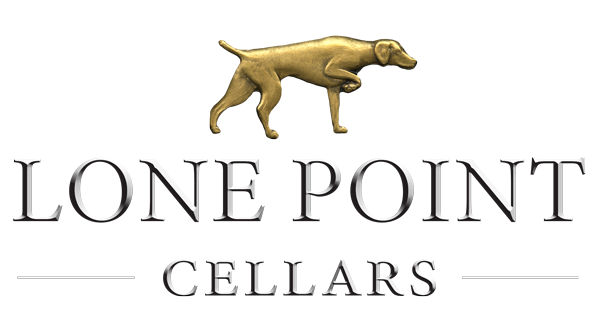Washington State Wine Regions: Everything You Need to Know
Washington doesn’t just have one area you’d call “wine country.” It’s a wine state.
Whether you’re near the Canadian border or at the state’s southern tip, there’s a solid chance one of Washington’s wine regions can be found nearby.
Here’s a guide to the state’s major American Viticultural Areas (AVAs).
Puget Sound AVA
The name of this Washington state wine region tells the whole story: Puget Sound AVA is situated beside Puget Sound and stretches from the Canadian border near Vancouver through Olympia, the state capital, at the southern end of the Sound. It’s about 5.5 million acres, with grapes growing on about 121 acres within the region.
The Puget Sound AVA is the only wine region in the state of Washington located to the west of Cascade Mountain. Its proximity to the Puget Sound and Pacific Ocean keeps the region relatively cool and wet—it receives between 15 and 60 inches of rain annually. The region’s temperate climate and high levels of precipitation, along with its sandy soil, make it the ideal growing location for grapes such as Pinot Noir and Riesling. It’s also one of the only wine regions in the state of Washington where varietals that grow in cool and wet conditions, like Madeline Angevine and Siegerrebe, can thrive.
If you’re visiting Seattle in the near future, be sure to stop by a winery. You don’t want to pass up the opportunity to try some of the most unique wines from the state of Washington.
Columbia Valley AVA
Simply put, the Columbia Valley AVA is massive. It’s by far the largest wine region in the state of Washington, consisting of more than 11 million acres total and about 60,000 acres of vineyards in central Washington. Roughly 99 percent of Washington wine is produced using grapes from the Columbia Valley AVA.
The Columbia Valley AVA is so big that it contains 12 sub-AVAs, including the Red Mountain AVA, the source of several Lone Point Cellars wines. While each of these AVAs has distinct characteristics, there is one commonality across all of them: they get little rainfall throughout the year. Most of the region only receives about 6-8 inches of rainfall, along with 300 sunny days annually. That may sound like a small amount of rainfall (and a lot of sunshine) for a growing region—especially for one in Washington, a state notorious for being rainy—but many grapes thrive in drier conditions. Just look at Napa Valley.
Soil conditions vary widely across the region, though sand and silt can be found in the dirt no matter where you go in the Valley. This consistency makes it the source of some of the best wines from Washington. Look no further than Lone Point Cellars’ big, bold Cabernet Sauvignon or the biting citrus of our Riesling, all of which are sourced from Washington state’s leading wine region. But, if you aren’t a fan of either of those wines, the Columbia Valley AVA is also the source of other popular wine varietals from Washington state, including Merlot, Syrah, and Chardonnay.
Columbia Gorge AVA
The Columbia Gorge AVA is dwarfed by the Columbia Valley AVA. Of course, that’s nothing to be ashamed of—after all, the Columbia Valley AVA takes up nearly a quarter of Washington state’s landmass. Plus, Columbia Gorge is home to some exceptional wines.
Despite encompassing only 191,000 acres overall and 381 acres dedicated to grape growing, the Columbia Gorge AVA is diverse. The eastern part of this growing region is located in arid central Washington state—similar to the Columbia Valley AVA. In contrast, the western part gets more rainfall, which is what the state is known for. Unsurprisingly, rainfall totals vary widely across the region, averaging between 10 and 36 inches yearly. Underneath the ground, you’ll find volcanic soil that supports the growth of grapes wonderfully.
So, how does this all translate into wine? If you head west, you’ll likely see cool-weather grapes, such as Pinot Noir and Riesling, growing in vineyards—not all that different from the Puget Sound AVA. To the east, on the other hand, you’ll find many of the grapes typically grown in Washington state’s warmer growing regions, like Syrah and Zinfandel.
Travel to wineries on opposite sides of the Columbia Gorge AVA for a journey through the world of wine. You’ll see how weather shapes the grapes used in crafting wines from Washington state.
Lewis Clark Valley AVA
The Lewis Clark Valley AVA first received recognition in 2016. It’s a baby by the standards of AVAs. But don’t take that to mean it’s inexperienced.
Grapes have grown throughout the Lewis Clark Valley for nearly 150 years, though large-scale grape growing has only kicked into gear within the last 30. This growing region has one of the more temperate climates out of the 16 across Washington state; farmers have planted plenty of fruits in addition to grapes in the area, like peaches and apples. But what truly sets the area apart from other regions within the state is the valley's nature. It’s V-shaped, preventing frost from forming on fruits when cold nights get cold. It also gets 11-22 inches of rain annually—a moderate amount for the state.
Cool-ish temperatures and soils formed from bunchgrass roots make for some of the more exciting wines you’ll find from the state of Washington. It has some of the cool weather grapes we mentioned earlier, like Pinot Noir and Riesling, as well as less common varietals such as Rkatsiteli and Semillion. Don’t miss out on trying wines from this up-and-coming region.
Start Your Washington Wine Tour At Lone Point Cellars
Lone Point Cellars would be honored to introduce you to Washington wines. Try some of the best wines the Columbia Valley AVA offers by exploring our collection of wines today!


